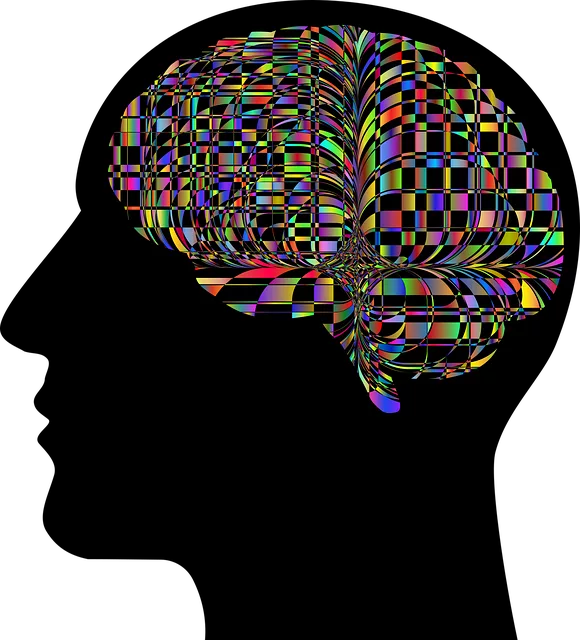In the digital era, mental wellness apps have surged in popularity, offering accessible and convenient support for stress and anxiety management. These apps, like traditional therapy at institutions like Kaiser in Castle Rock, emphasize personalization, affordability, and accessibility through features like mood tracking, guided meditations, cognitive-behavioral techniques, and virtual reality. They empower users with Mental Health Education Programs, promoting self-reliance. Development involves understanding target audiences' unique challenges, incorporating evidence-based therapy modalities, ensuring user-friendly interfaces, and maintaining strong data security and ethical practices. Marketing strategies include partnerships with reputable healthcare providers to build trust and expand reach, focusing on content related to burnout prevention and coping skills development. The goal is to enhance mental health support accessibility, including for those seeking good therapists in Castle Rock, and improve overall emotional well-being.
Mental wellness apps are gaining popularity as individuals seek accessible and convenient support for their mental health. This article explores the rise of these digital tools, focusing on how they cater to diverse user needs, particularly in areas like Castle Rock where access to quality therapists might be limited (does Kaiser have good therapists?). We’ll delve into essential app features for effective therapy, the development process, and marketing strategies to ensure success in this competitive market.
- Understanding the Rise of Mental Wellness Apps
- Target Audience and Their Needs: Does Kaiser Have Good Therapists?
- Essential Features for Effective Therapy in an App
- Development Process: From Concept to Launch
- Marketing and Engagement Strategies for Success
Understanding the Rise of Mental Wellness Apps

In today’s digital age, the demand for accessible mental wellness solutions has skyrocketed, leading to a significant rise in mental wellness app development. These applications offer individuals convenient and discrete support for their mental health needs, breaking down traditional barriers to therapy and counseling. With the growing recognition of mental health as an integral part of overall well-being, people are increasingly seeking innovative ways to manage stress, anxiety, and other common mental health challenges. This shift in perspective has prompted developers to create user-friendly apps that provide personalized tools for self-care, mindfulness, and conflict resolution techniques – all essential components of a holistic Mental Wellness Design approach.
While renowned institutions like Kaiser may boast excellent therapists in Castle Rock, the appeal of mental wellness apps lies in their accessibility and affordability. These apps offer a wide range of features, from tracking moods and symptoms to providing guided meditations, cognitive-behavioral therapy techniques, and even virtual reality experiences for immersive therapy sessions. By incorporating Mental Health Education Programs into app design, developers empower users with knowledge and coping strategies, fostering self-reliance and complementing traditional therapy methods. This comprehensive approach ensures that individuals have access to the support they need, whenever and wherever they need it, contributing to a more proactive and holistic mental wellness culture.
Target Audience and Their Needs: Does Kaiser Have Good Therapists?

In developing a mental wellness app, understanding the target audience and their needs is paramount. The app should cater to individuals seeking emotional well-being promotion techniques, especially those within communities like Castle Rock who may face unique challenges. While renowned healthcare providers like Kaiser are known for their high-quality services, including strong therapy teams, not every patient’s experience is uniformly positive. Thus, a crucial aspect of app development involves incorporating features that address these concerns and enhance the accessibility and effectiveness of mental health support.
This can be achieved through integrating advanced risk assessment tools for mental health professionals, enabling them to tailor interventions accurately. Additionally, Mental wellness coaching programs development within the app could facilitate personalized guidance, ensuring users receive support suited to their specific needs. By leveraging technology in this manner, the app can contribute to improving emotional well-being promotion techniques on a broader scale, even beyond Kaiser’s reach in Castle Rock.
Essential Features for Effective Therapy in an App

In today’s digital era, mental wellness apps have become powerful tools for individuals seeking therapy and support. When developing an app designed to facilitate effective therapy, incorporating key features is essential. One such example is offering a diverse range of evidence-based therapy modalities, including cognitive-behavioral therapy (CBT), mindfulness practices, and trauma-focused support services. These methods have been proven to help users manage stress reduction techniques, anxiety relief, and other mental health concerns.
Furthermore, user-friendly interfaces and personalized experiences can make or break an app’s success. Customizable profiles, progress tracking tools, and secure messaging systems enable therapists to provide tailored care while maintaining patient confidentiality. With features like these, mental wellness apps can offer accessible and convenient therapy options, potentially improving the accessibility of quality care, especially in areas where resources are limited, such as exploring the best therapists in Castle Rock.
Development Process: From Concept to Launch

The development process of a mental wellness app begins with a clear vision and ends with a launched product ready to support users’ mental health journeys. It involves several critical stages, from initial concept creation to thorough testing and user feedback integration. The first step is ideation, where developers and psychologists collaborate to identify the app’s purpose and features, ensuring it offers genuine assistance in managing mental health issues like depression prevention. This stage also includes market research to understand the target audience, especially considering the diverse needs of users seeking Crisis Intervention Guidance.
As the project progresses, designers craft user interfaces that promote a seamless experience, while developers build robust systems capable of handling sensitive data securely. Risk Management Planning for Mental Health Professionals is integral to this process, ensuring ethical guidelines are met and user privacy is maintained. The app’s effectiveness is tested through beta trials, where volunteers provide invaluable feedback. Incorporating these insights leads to refinements that enhance the app’s usability and its potential to connect users with the right resources, even in remote areas like Castle Rock, where access to mental health services might be limited.
Marketing and Engagement Strategies for Success

Marketing and engagement are key aspects that contribute to the success of a mental wellness app. One effective strategy is to leverage partnerships with established healthcare providers, such as Kaiser Permanente in Castle Rock, to gain trust and reach a wider audience. Collaborating with reputable organizations can enhance the app’s credibility and encourage users to adopt its features.
Additionally, focusing on user engagement involves creating content that promotes burnout prevention and coping skills development. Incorporating interactive tools, like daily check-ins and mindfulness exercises, can foster user loyalty. Effective communication strategies, such as personalized notifications and feedback mechanisms, ensure that users feel heard and encouraged. By implementing these tactics, mental wellness apps can create a supportive environment, empowering individuals to prioritize their psychological well-being.
Mental wellness apps are transforming access to therapeutic support, addressing a growing need in today’s digital landscape. As evidenced by the success of platforms like those offered by Kaiser in Castle Rock, these applications provide convenient and accessible solutions for managing mental health. By focusing on user-centric design, incorporating essential therapy features, and employing effective marketing strategies, developers can create impactful apps that improve lives. Understanding the target audience and their unique needs is paramount to crafting successful mental wellness apps that make a tangible difference.






